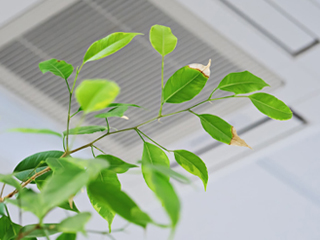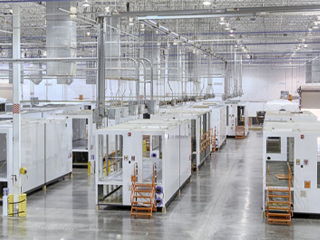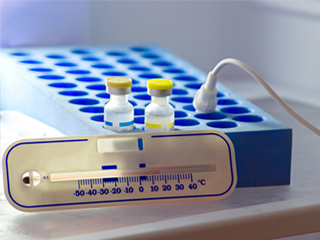What Is Concrete Curing?
Concrete curing is the method of regulating enough moisture in concrete within the required concrete temperature range. This will help cement hydration in its primary stages. Hydration is the chemical synthesis between cement and water. This leads to the molding of different chemicals resulting in setting and hardening. The hydration mechanism is influenced by the initial concrete temperature. Other factors are the surrounding air temperature, the dimensions of the concrete, and the mix design. For this procedure to be effective, in-situ concrete must carry enough moisture. There must also be an optimal temperature. This will move the chemical reaction at a brisk and constant pace.
The American Concrete Institute (ACI) prescribes a minimal curing time. This period is relative to reaching 70% of the compressive strength of concrete. It is widely accepted that this process takes seven days of curing. But 70% strength can be achieved faster when concrete is exposed to elevated temperatures. It also helps when specific admixtures are thrown into the concoction. More time may be required for curing when concrete or surrounding temperatures are colder. Around 20℃ or 68℉ is believed to be the perfect cooling temperature.
Why Concrete Curing is Important
Meticulous adjustment of moisture and temperature of in-situ concrete while curing is an important factor. This facilitates the quality control and dependability of the mixture. Correct curing methods will stop in-situ concrete from drying, shrinking, and cracking. This will determine the stability of the structure at the cover zone. The curing of concrete should happen immediately as it settles. It is also important to monitor concrete temperature and curing status for seven days. If the water evaporates from the concrete before it achieved maximum strength, there will be inadequate water left in the mix to completely hydrate the cement. Hence, it will not be able to reach maximum compressive strength. This is particularly apparent in acute weather conditions where the concrete slab is exposed to the elements. The strength and development of the concrete can become questionable.
Techniques for Curing
A lot of elements determine the speed at which water evaporates from newly-settled concrete. These are air temperature, humidity, concrete temperature, and wind velocity. Several methods have been used to aid the concrete in holding moisture during the primary stages. These methods are used to:
- Keep water inside the concrete during primary solidification
- Lessen water displacement from the surface of the concrete
- Hasten concrete strength build-up by giving heat and more moisture
The process selected relies on contributors such as accessibility of curing materials, size, shape, and age of concrete, production facilities, aesthetic appearance, and economics. Curing commonly undergoes a sequence of methods. These are to be utilized at a specific time as the concrete ages. The allotted time for each process is relative to the degree of hardening of the concrete. This is required to make sure the method does not ruin the concrete surface.
Maintaining Moisture
- Ponding and Immersion
Ponding is commonly utilized to cure flat surfaces. These are usually pavements and floors. Earth and sand surrounding the concrete surface can hold a pond of water. Ponding is a perfect technique for avoiding the loss of moisture from the concrete. It is also good for maintaining a steady concrete temperature. Immersion of a completed concrete block is usually utilized for curing test specimens. This is just one of the curing techniques for improving the compressive strength of concrete.
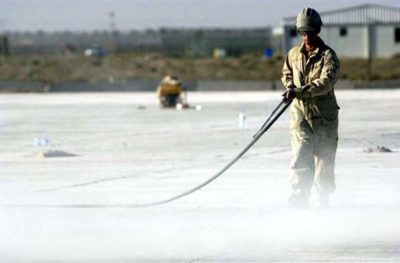
Photo credit: engineer-educators.com
- Spraying and Fogging
Spraying and fogging are employed when the outside temperatures exceed the freezing point. It is also utilized when the humidity is low. Fog mist is dissipated via nozzles or sprayers to elevate the humidity of the air over flatwork. This decelerates evaporation from the surface. Fogging is done to lessen plastic shrinkage cracking. If sprinkling is executed in increments, the concrete must not be allowed to dry between applications. Burlap or similar textiles are used to prevent drying. Constant wetting and drying can lead to surface cracking.
- Saturated Wet Coverings
Wet coverings soaked in water like burlap, cotton mats, rugs, or other moisture-absorbent textiles, are often utilized for curing. These items should be laid down the minute the concrete has hardened adequately. This technique will help avoid surface damage. It should be moist at all times to allow a film of water to settle on the concrete surface during curing time. This is yet another of the curing techniques for improving the compressive strength of concrete.
- Left-in-Place Forms
Left-in-place forms commonly give adequate protection against moisture dissipation on the formed concrete surfaces. They are simply left on the surface for the duration of the construction. Wooden forms should be kept wet at all times. This is particularly needed in hot, dry weather.
Reducing Loss of Water
- Covering Concrete with Impervious Paper or Plastic Sheets
Impervious paper and plastic sheets can be placed on wet concrete. An example of this paper is polyethylene film. This lightweight material works to slow down moisture. Its advantage is that it’s easy to apply. The concrete surface should have hardened enough when you apply them. This method will avoid surface damage.
- Applying Membrane-Forming Curing Compounds
Membrane-forming curing compounds are utilized to slow down or lessen the evaporation of moisture from concrete. They are either transparent or translucent and can even be colored white. White compounds are ideal for hot and sunny weather. These compounds help refract light from the sun. Curing compounds must be implemented right after final finishing. They should adhere to ASTM C3094 or ASTM C13155 standards.
Accelerating Concrete Strength Gain
-
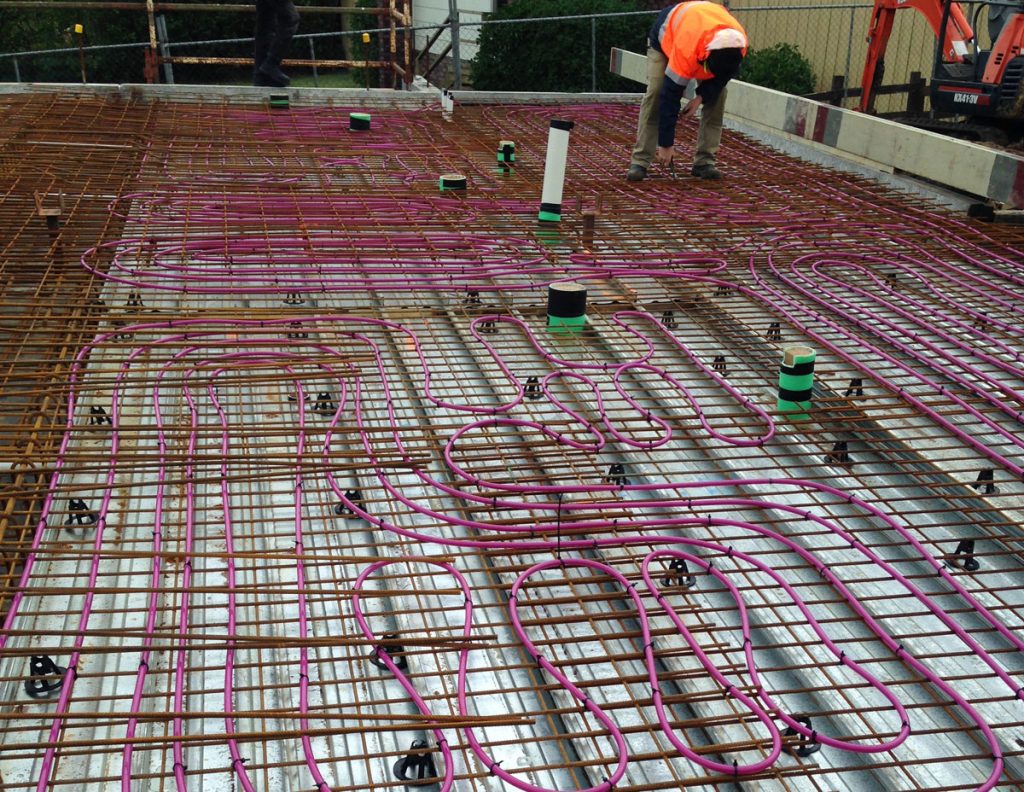
Photo Credit: www.mjarchitecture.com.au
Live Steam
The two techniques for steam curing are live steam and high-pressure steam. Maintain the temperature of live steam at around 140°F. Stay at this temperature until correct concrete strength is reached.
- Heating Coils
Heating coils are commonly utilized as ingrained elements close to the surface of concrete elements. Their function is to safeguard the concrete from freezing in cold-weather concreting.
- Electrical Heated Forms or Pads
Electrical heated forms or pads are commonly utilized by precast concrete suppliers.
- Concrete Blankets
Concrete insulation blankets exist to cover and protect concrete surfaces that are exposed to freezing temperatures. This method is best applied during the curing period. Be sure that the concrete has reached adequate hardness before putting on concrete blankets. This precaution is to avoid surface damage.
- Curing for Compressive Concrete Strength
Newly mixed concrete commonly holds more water than is needed for the hydration of the cement. But too much evaporation can slow down or inhibit proper hydration. This usually occurs on the surface of the slab. These methods for holding moisture of in-situ concrete are essential for correct hydration. This allows the concrete to achieve adequate compressive strength.
Curing precisely determines the strength of the total structure. Strength gain is quick in primary stages but proceeds by degrees for an undetermined period. Correct curing will intensify strength, water resistance, abrasion resistance, volume stability, and resilience against freezing and thawing.
AKCP Solutions
The technique of placing and curing concrete on-site needs exact temperatures. This allows the structural robustness of the concrete to remain intact. With an AKCP wireless temperature sensor, the question of undetermined curing periods is eliminated. The sensor also serves as a data logger. Data collected from this sensor could be accessed remotely and in real-time using AKCPro Server Central Monitoring Software. AKCP devices set the standard for accuracy and durability.
This wireless sensor lets team members execute their tasks without the headache of obtrusive wires. It also removes the need to look for wires beneath heating blankets. This commonly occurs when depending on external data loggers. The sensor is completely ingrained in the concrete. It is fastened on the rebar inside the formwork. AKCP Wireless Temperature Sensor analyzes the results of surrounding temperatures and the external atmosphere on in-situ concrete. This allows you to manage concrete curing and guarantees the perfect settings for compressive strength gain. Real-time displays let contractors maximize the healing process. It also allows them to lessen energy expenditures. This results in an accurate prognosis of when concrete has gained adequate strength.
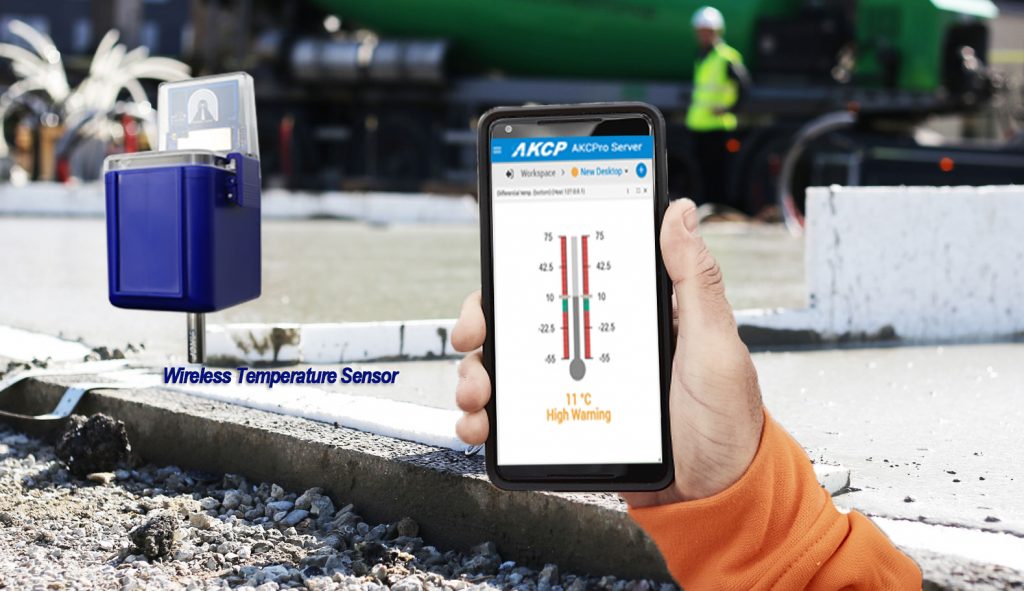
Concrete Monitoring using AKCP Monitoring Solutions
Reference Links:
https://www.akcp.com/solutions/concrete-curing-sensor/
https://www.specifyconcrete.org/blog/techniques-for-concrete-curing
https://www.bobvila.com/articles/curing-concrete/
https://civilread.com/curing-of-concrete/


